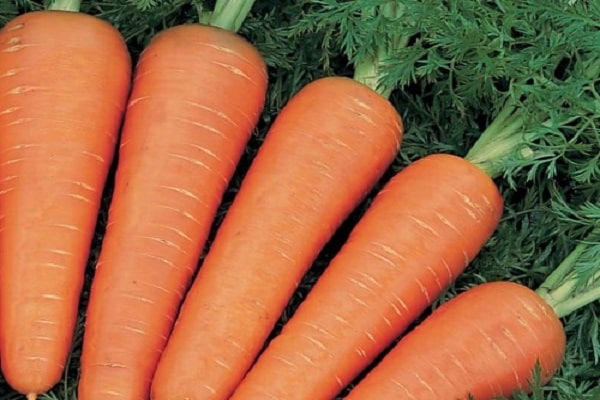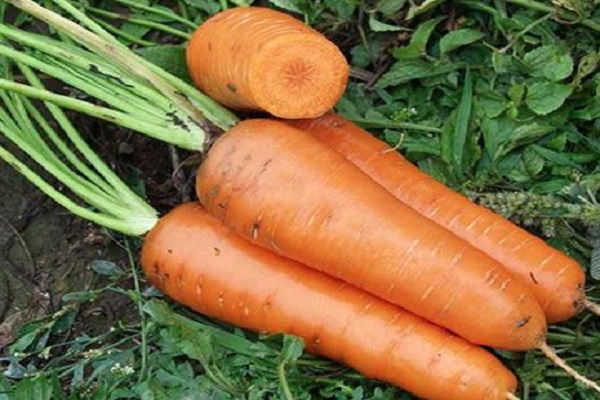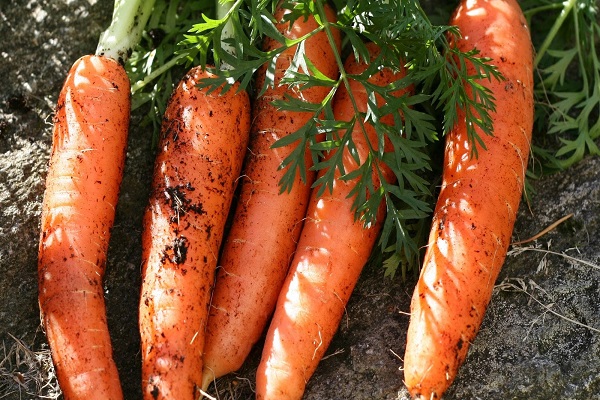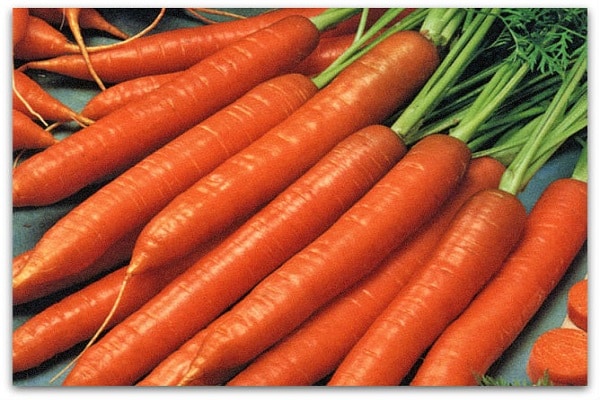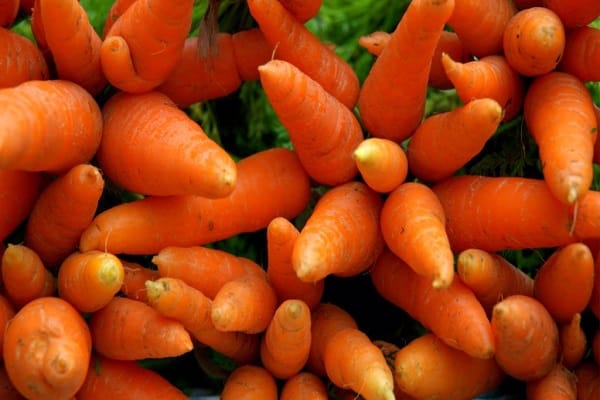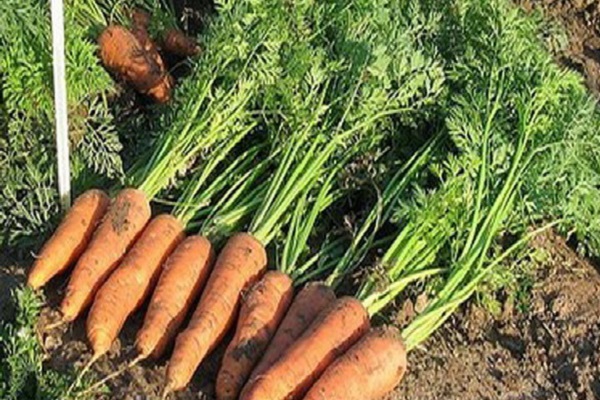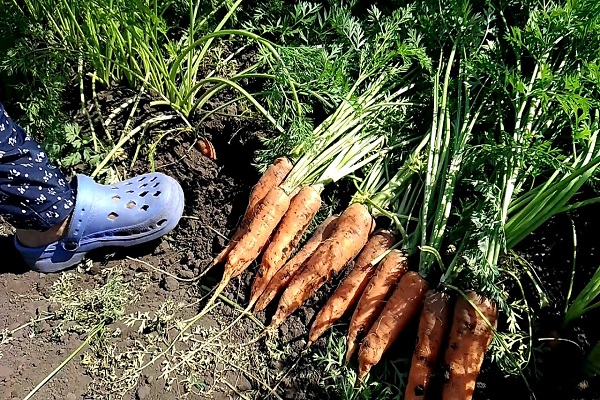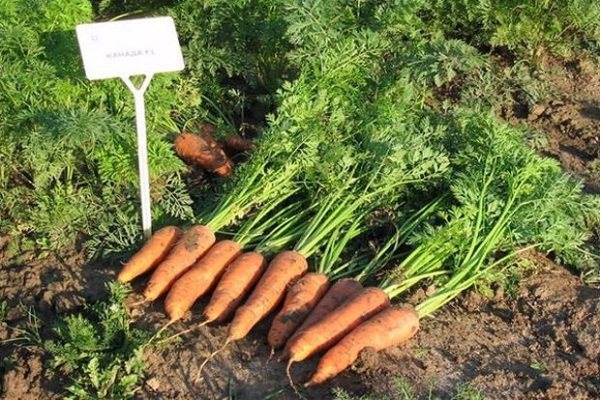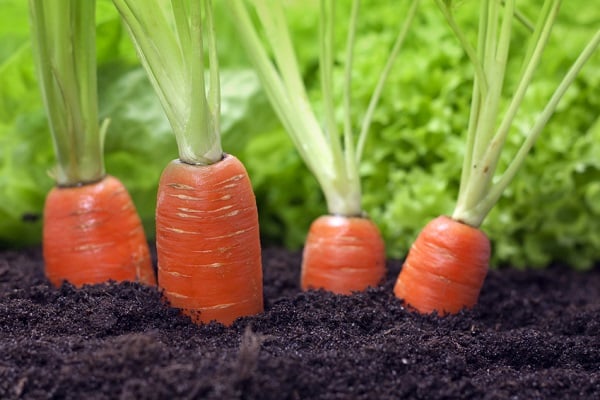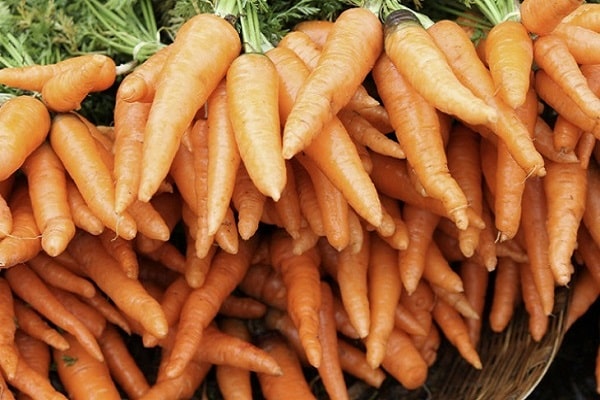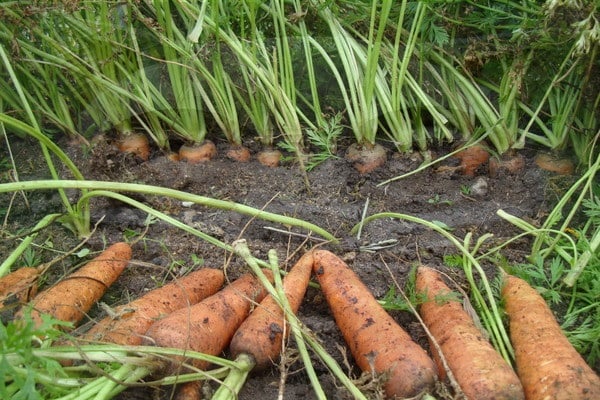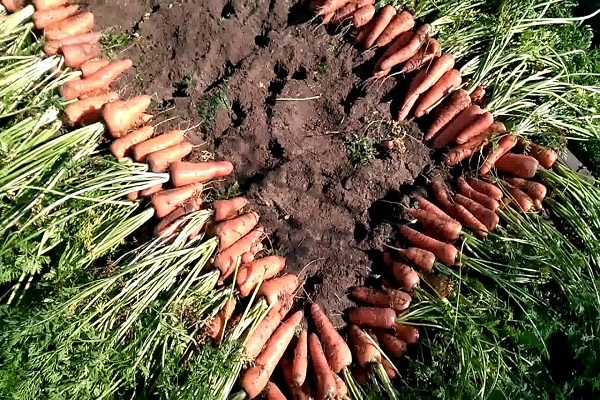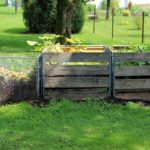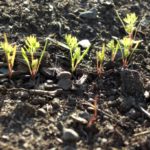In 2001, a new carrot, Canada f1, launched on the Russian market. Hybrid from breeders of the Dutch company BEJO ZADEN B.V. (Bejo Zaden) immediately attracted the attention of vegetable growers with its promising characteristics:
- record high yield (4.5-7.5 kg/m2);
- the variety is unpretentious, grows even on heavy soils and under unfavorable conditions;
- resistance to diseases and coloring;
- suitable for any region of our country;
- medium late, but usually ahead of most varieties;
- excellent presentation - the carrots are smooth, bright orange;
- the root vegetable is tasty, sweet, with a high content of beta-carotene;
- Suitable for long-term storage.
The soil
Over the years, carrots of the Canada f1 variety have been tested by vegetable growers on various types of soil. The reviews are mostly positive.
Heavy clay soils are usually not suitable for growing carrots. Hybrid Canada, unlike other varieties, gives stable results.
The yield of this variety on light loam and sandy loam soils consistently breaks all records.
On the scale of a small plot, you can try to improve the quality of the soil by introducing various “lightening” components:
- coarse river sand;
- sawdust;
- compost, humus;
- rotted manure in small quantities (fresh manure is destructive for carrots);
- crushed peat;
- with high acidity - chalk, dolomite flour.
It is important not to overdo it with adding organic matter; the main thing is to achieve sufficient “looseness”. The seeds of this crop take quite a long time to germinate, about three weeks. During this time, a dense crust may form, which will prevent young shoots from developing.
An excess of organic matter has a bad effect on the quality of the crop; root crops become distorted and crack.
Before planting seeds, the soil is dug deeply and watered with a manganese solution. Then you can apply granular complex mineral fertilizers.
Landing
Hybrid Canada belongs to the mid-late varieties. Seeds can be sown in the ground at the end of April. The beds are located in the place of their predecessors:
- onion;
- cucumbers;
- tomatoes;
- cabbage;
- zucchini;
- potato.
You cannot plant carrots after:
- celery;
- parsley;
- parsnip;
- bell pepper
The “f1” marking warns that this is a first-generation hybrid and is not suitable for self-cultivation of seed.But branded Canada f1 seeds delight with excellent germination and do not require pre-sowing preparation.
The seeds are carefully laid out in shallow (1.5-2 cm) grooves at a distance of 0.5-1 cm. The distance between the rows is about 20 cm. 90-100 pieces are used per 1 m². seed material.
Advice
After planting the seeds of this variety, it is best to mulch the soil with peat and cover it with film until germination. This will protect the soil from hypothermia in the event of late frosts and create an optimal microclimate for seed germination.
Care
Growing Canada f1 carrots will not cause much trouble. Basic care measures:
- weeding;
- thinning 2 times per season;
- regular loosening;
- fight against carrot fly;
- hilling when the tops stick out of the ground;
- watering.
Weeding beds with root crops begins even before the first shoots appear. Grown weeds easily “clog” tender young shoots.
Thinning carrots Canada is carried out at two weeks of age, leaving 1-2 cm between shoots. And after the root crops reach 1 cm in diameter, leaving 5-6 cm. Carrots of this variety are already suitable for eating after the second thinning.
Loosening prevents the formation of a hard crust, which disrupts soil aeration and serves as a refuge for carrot flies. Peat-mulched beds do not require frequent loosening.
Often the tops of the carrots begin to protrude from the soil and turn green. Then this part of the root crop is not suitable for food. This can be avoided by hilling.
Root crops without sufficient watering do not gain potential weight, become bitter, wither and lose yield.
It is important to achieve a moistening layer of soil commensurate with the length of the carrots with each watering.
A bed of carrots close to maturity is soaked to a depth of 30 cm.From mid-August, watering is reduced to a minimum so that the root crops do not crack.
carrot fly
The main pest of this vegetable crop is the carrot fly. It attacks more often sweet varieties with a high content of beta-carotene.
The Canada carrot hybrid is unfortunately susceptible to this pest. It is useful to plant onions next to the beds of root vegetables. Some vegetable growers grow these crops in one bed at once, alternating rows. Reviews about this method are good; the carrot fly avoids onion-carrot planting.
The pest often appears in thickened beds overgrown with weeds, as it loves shade.
If you are infected with a carrot fly, you can use the drugs Actellik and Intavir.
Harvest
If there is heavy rainfall, harvesting is postponed for a week. Otherwise, carrots will be stored worse.
The reliable yield of the Canada variety, even under unfavorable weather conditions and heavy soils, makes this hybrid increasingly popular.
The root vegetables grow bright, smooth, without tuberosity, conical in shape, 18-20 cm long. The weight of one Canada carrot is 130-170 g. The core is small, in cross-section it almost does not differ in color from the main part. The attractive presentation is complemented by an excellent sweet taste. Juicy carrots of the Canada variety are ideal for processing into vegetable juices, sugar content 8.2%, dry matter 14.3%.
Store root vegetables in boxes, sprinkling layers of vegetables with wet sand, sawdust or peat at a temperature of 1-2 ℃. You can keep the harvest in 4-5 kg plastic bags. Hybrid Canada f1 is well stored and retains its presentation for a long time.

